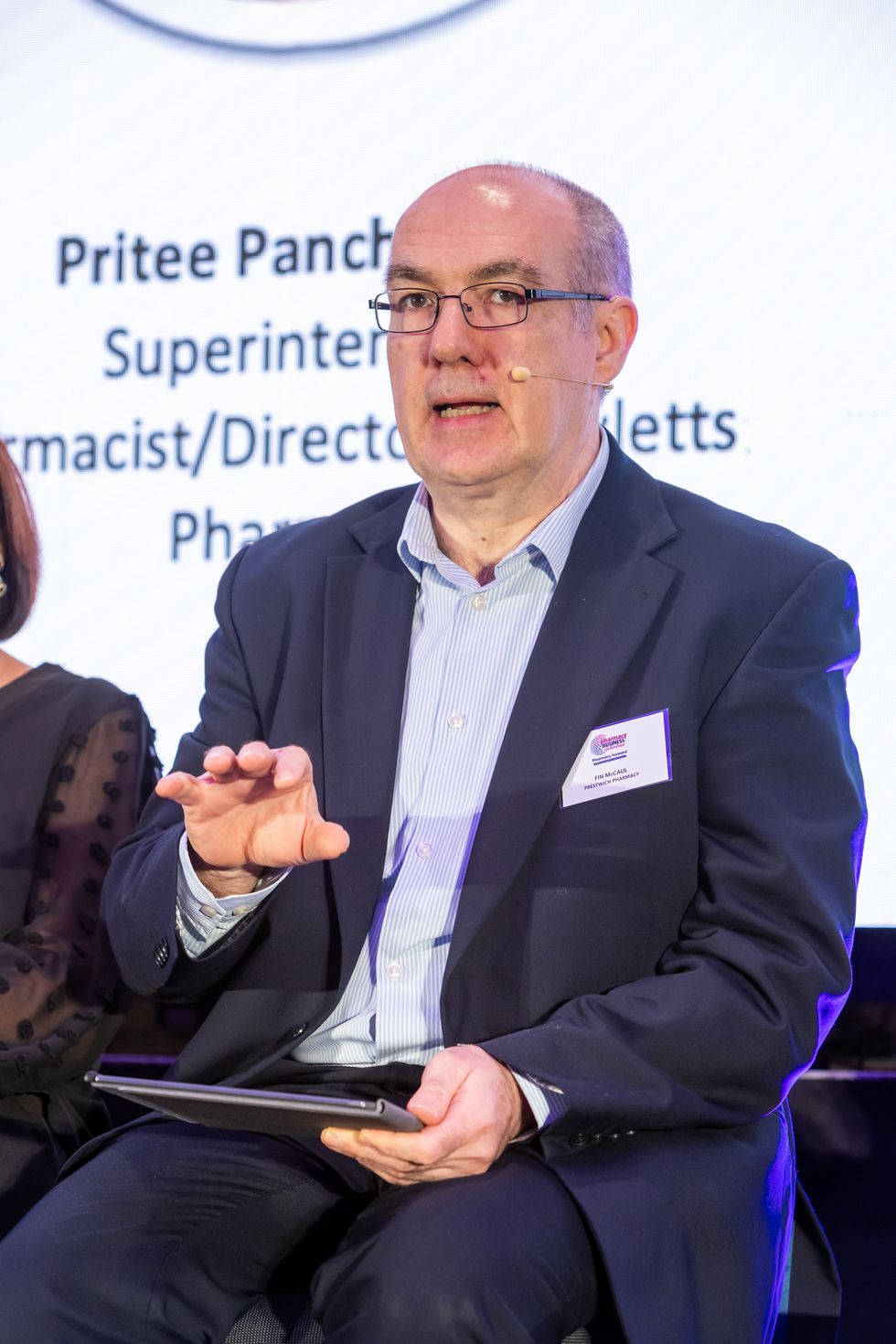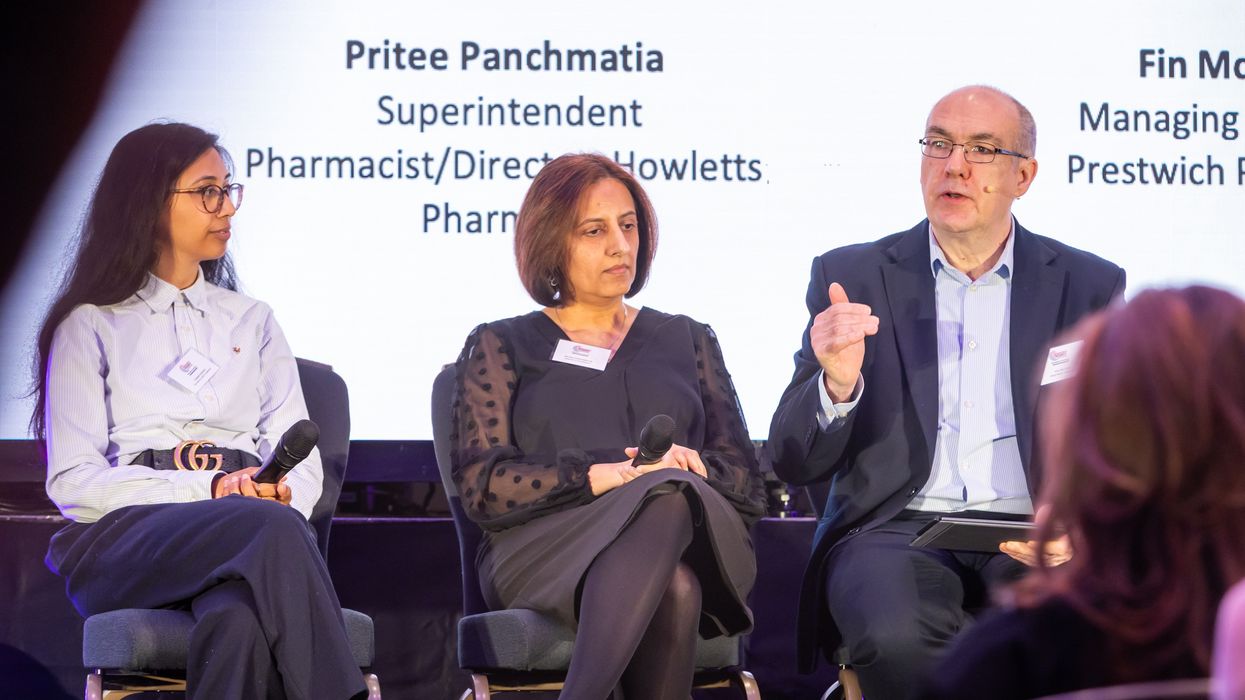With mounting financial pressures and rising patient demand, it has become more important than ever for pharmacies to embrace smarter, more efficient ways of working.
At the recent Pharmacy Business Conference, industry leaders came together to discuss the benefits of adopting new technologies, if implemented correctly.
“Pharmacy has never been more difficult than it is today, with huge financial strain and increasing patient demand,” said Pritee Panchmatia, director and superintendent pharmacist of Howletts Pharmacy.
She stressed that for pharmacies to move forward and stay competitive, they must work more efficiently by embracing change and new technology.
“If you try and work in the traditional methods of pharmacy, nothing is going to change,” Pritee warned.
“You're still going to find yourself bogged down with old processes, and you're not going to free up your time, and you could end up increasing the risk of human error.”
While adopting digital tools is critical, she and others on the panel emphasised that true success lies in also ensuring interoperability, clear standard operating procedures (SOPs), and staff training and support.

Digital Transformation
Pritee shared her journey of expanding her business from one to three pharmacies in 2018. After delays caused by COVID-19, she implemented the Titan PMR system to help manage services more efficiently.
The impact was transformative. “It gave me more time to invest in my staff, upskill them, and get them more involved in the clinical services we were providing,” she said.
Pritee also introduced drug comparison tools, which streamlined the ordering process and saved both time and money.
Additionally, use of Accurx greatly enhanced their engagement with both patients and GP practices, as information gets passed across straight away.
“We use the pre-consultation questions on Accurx to engage with our patients before they even walk into the pharmacy,” she explained.
More recently, Pritee introduced an app that links with the PMR system, allowing patients to track their own medication.
“Implementing these tools has increased our efficiency, boosted patient engagement, and allowed us to use our time much more effectively,” she added.

Integrating Systems for Smarter Operations
Fin McCaul, managing director of Prestwich Pharmacy, discussed how their PMR system integrates with EPOS, allowing smarter inventory and patient management.
“We use the reports not just to manage stock, but to track where patients are and ensure they’re collecting their medication,” he said.
By introducing scan-to-bag systems and improving clinical checks through IT, Prestwich Pharmacy has reduced dispensing errors and freed up staff to focus more on services.
Prestwich Pharmacy was one of the first community pharmacies to adopt robotics in 2006.
Finn described the use of robotics, specifically the Meditech robot, as game-changing.
“Robotics improve dispensing speed and accuracy, but more importantly, they free up staff from manual tasks, allowing greater focus on service delivery and space optimisation,” Fin said.

AI in Pharmacy
Yasmin Karsan, pharmacist prescriber and AI engineer at The Digital Clinical Safety Company, shared insights into her work with AI-powered solutions.
Recently, she developed and launched an automated Pharmacy First consultation programme that helped reduce their consultation time by about 70%. The tool can be integrated with PharmOutcomes or Sonar.
“Artificial intelligence (AI) has huge potential to empower pharmacists, pharmacy teams, and business owners,” said Yasmin.
Beyond automation, she pointed to AI’s role in content creation for marketing and patient engagement, particularly on social media platforms like TikTok.
“We're moving into a world of social media where our new patients will be buying things from the TikTok Shop. They’ll be watching reels and content from influencers. So, we need to diversify our portfolios to be able to advertise through those avenues,” she said.
"And with tools like ChatGPT, you no longer have to worry about how to edit or create your own content — it can do it all for you."
Yasmin also highlighted how pharmacies can leverage patient data from PMR systems to make better-informed decisions, especially when dealing with the impact of global trade tariffs on pharmaceutical pricing.
Challenges of Changing Workflow
Pritee acknowledged the initial apprehension that comes with digital transformation but emphasised the clear benefits it brought.
She piloted the Titan system in one branch before expanding to the others, shifting pharmacists’ focus to clinical assessments while letting technology handle accuracy checks.
"Even implementing something as simple as the batch flow that Titan offers —where dispensers process several baskets together for one patient while following Titan's workflow processes—has helped increase our capacity without compromising patient safety,” she explained.
“If I can adopt and embrace these technologies, I'm sure anyone can. Adopting these changes has made a big difference in improving our workflow, patient safety, and, most importantly, decreasing the stress that the whole team feels.”
Pritee also highlighted the importance of team support and training in making the transition successful.
Setting Standards Key to Unlocking Tech Benefits
The panel was unanimous on the importance of setting standards and aligning SOPs with technology.
“To maximise operational efficiency, it's essential to set clear standards and train the team thoroughly to ensure that they meet the expectations,” Finn noted.
Yasmin added that many pharmacies underuse features of their PMR systems simply because their SOPs don’t align, resulting in unnecessary double or triple-checks.
Pretty agreed that protocols are critical. “For the first six months after we implemented the changes, I spent time working with the teams to make sure they understood and followed the protocols.”
“Because if they start trying to work in the old ways, then you are again introducing human errors, and you're defeating the whole point of introducing this technology.”
Fin reinforced the message: “Getting the standards and operational processes right—and holding people accountable—takes time. But if you do that, you will see real progress.”

A Call to Action: Don’t Delay Change
When asked how to educate colleagues and upcoming pharmacists on technology use, Pritee was clear: “We have to be real and accept that technology is here to stay. We have to adopt and adapt, otherwise we won't survive.”
“Having used technology myself and coming from a non-techy background, I've seen the differences it's made in how we work and what we can now achieve.”
“Take the first step, whatever is most important. Work with your team, support them, and you’ll see the impact.”
Yasmin encouraged self-empowerment and collaboration. “Embrace it. Take small steps. And if you need support, reach out—we can all learn from each other.”
Fin concluded with a reality check: “There is not one solution for everybody. But don’t bury your head in the sand and do nothing.”
"You need to look at your business differently—not just in terms of surviving, but growing."













